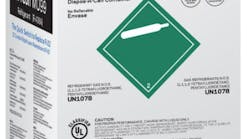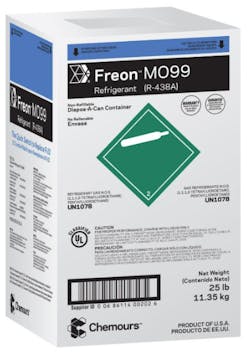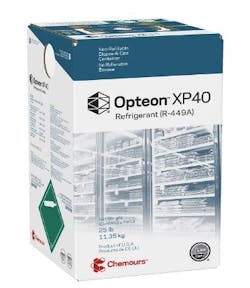This year, we are providing space to the sponsors of our 2018 Refrigeration Roundtable, to address issues related to commercial refrigeration and refrigerants.
This month, we feature Chemours.
In November, Chemours and Meier Supply presented a webinar, “The Future of Refrigerants and Achieving Long Term Compliance,” hosted by Dale Norton of Meier Supply, and Mark Love of Chemours. The bulk of the webinar focuses on Air Conditioning, but the latter portion addresses Refrigeration.
The industry is facing many changes related to refrigerant handling and documentation, and new rulings limiting ozone depletion potential and global warming potential.
“All these have resulted in limited access to everyday common refrigerants and what may seem to be unreasonable, or unexpected price fluctuations, but at the same time these changes have also brought about new technologies,” said Dale Norton, director of sales for Meier’s Supply Co., Ithaca, N.Y. “Whether you’re a contractor, a service mechanic or a facilities manager, it’s extremely important to understand how these changes will impact your business.”
Mark Love, account manager with Chemours, addressed regulations sparked by atomospheric ozone depletion and the Montreal Protocol.
“With respect to the Montreal Protocol phase out of chlorine containing compounds, when you boil it all down, what we’re really talking about is the R-22 phase out. In 2015, the EPA published its final five-year accelerated phase out. They dropped the production cap from 2014 to 2015 by about 60 percent, and then after that, over the next five years, dropped it about 20-25% year-over-year.
“In 2019, we are entering the final year of production for R-22 in the United States. After that, there will be no more R-22 produced in the United States,” Love said. R-22 refrigerant will only be available in the inventories of producers and contracting businesses, and in the reclaimed gas market.
While the market has moved away from R-22, Love said an unintended consequence is that there are now too many R-22 replacements for contractors to choose from. Love said he has heard contractors express concern and confusion over the number of replacements. Their service vehicles contain many different refrigerants, and contractors want to know when they can move forward with confidence in using one single R-22 replacement.
“MO99 has been adopted very heavily in the air conditioning space because it’s a very quick switch from R-22. It’s similar to R-407C, but you can use it with mineral oil and Alkylbenzine,” Love explained.
“We recommend it as the R-22 replacement because it has the closest performance match to R-22 of all the oil compatible R-22 replacement products. It’s got a 93% capacity match. It’s EER in essence is the same as R-22. If you have AC equipment that’s running on R-22, you don’t need to change the equipment. If it’s working on 22, it will work on MO99. The biggest change is that it requires no oil change. In terms of a conversion, the conversion is very simple, and very straightforward. Working across all oils is its defining feature.”
(NOTE: Any No Oil Change Replacement Refrigerants will not be compatible with Trane® 3-D® or Danfoss SM scroll compressors without doing a full oil change over to POE oil. For refrigerant conversions in larger commercial building applications using rooftop units or screw compressors, detailed system evaluation is recommended. Some instructions for residential and commercial applications can be found online, at www.Freon.com.)
During any conversion, recover the used R-22, perform a system leak check, label the system and optimize set points.
“This is important, especially labeling the system, because once you put MO99 in, the pressures are the same. The Delta-T is going to be the same, so it’s going to be very difficult to distinguish with your gauges whether you have MO99 or R-22 in it, so within each jug of MO99 we supply labels so that you can label that piece of equipment and continue with converting the rest of the systems that you have,” Love said.
Love also advised replacing the Shrader pin. He said contractors have done a phenomenal job of adjusting to the market and converting systems from R-22 to R-22 replacements.
“California officials have submitted a proposal that, starting in 2024, service gas restrictions will be in place for refrigerants with GWP greater than 1500. Other than R-134A, there’s no refrigerants you have on your truck right now that’s below that limit. In essence, this GWP limit in the state of California outlaws R-404A and R-507,” Love said.
“It would also eliminate the use any of the 407 refrigerants. The developed countries are moving to this 1500 GWP limit for large refrigeration systems and this is all new installation."
Chemours has a full line of Opteon™ refrigerant solutions such as Opteon™ XP40 (R449A) that fall below the 1500 WGP limits and replace incumbent refrigerants such as R-22, R-404A and R-507.
Love said that by vacating SNAP 20, the EPA did a disservice, in that the action sent a message to the industry that things would revert back to the past.
“That couldn’t be further from the truth,” Love said. “We are moving, and continuing to move forward in an environment — especially in refrigeration — that trends towards lower and lower GWP”











